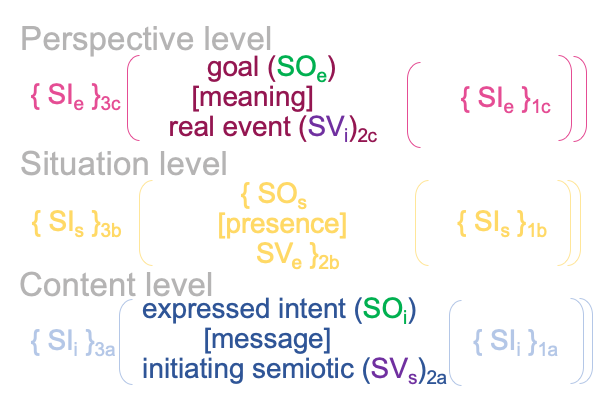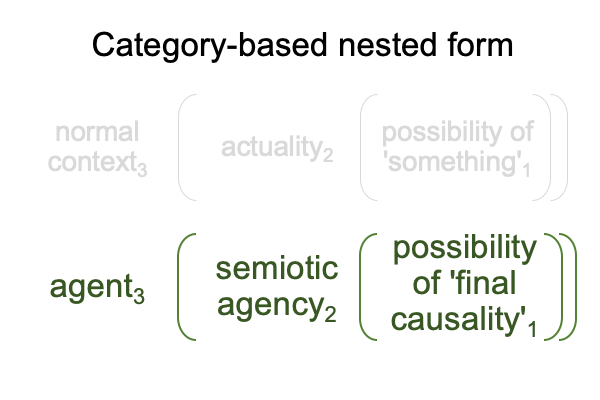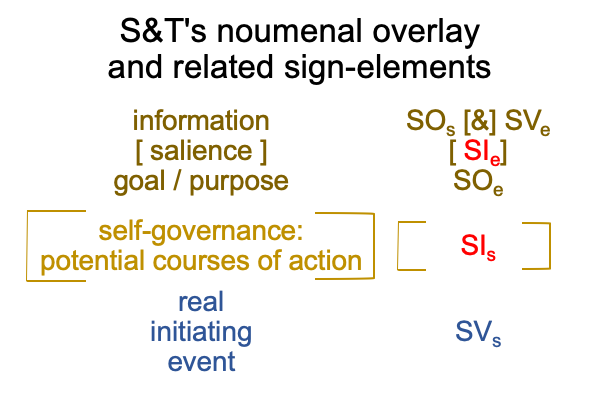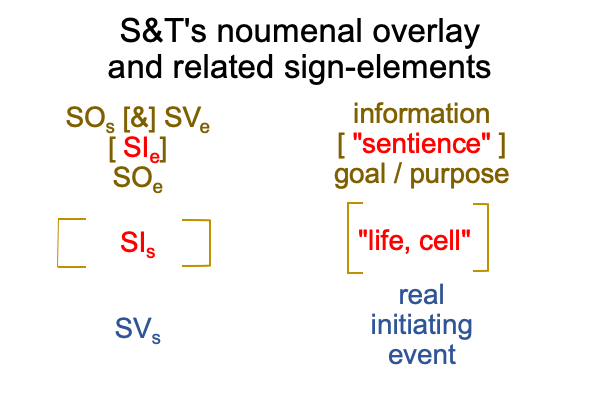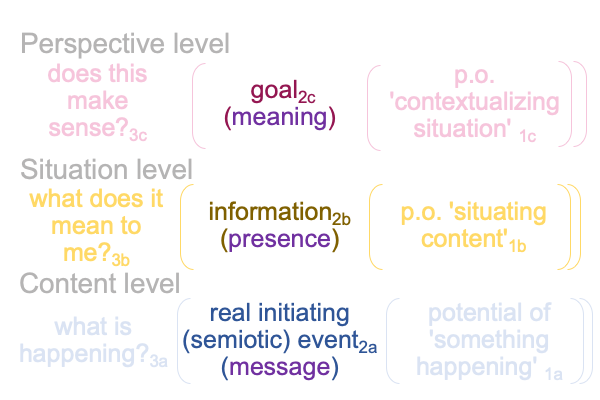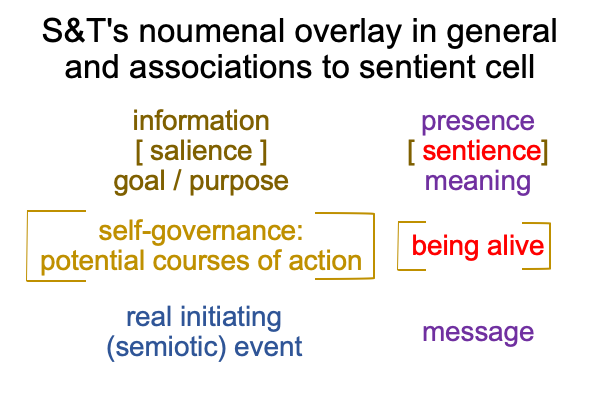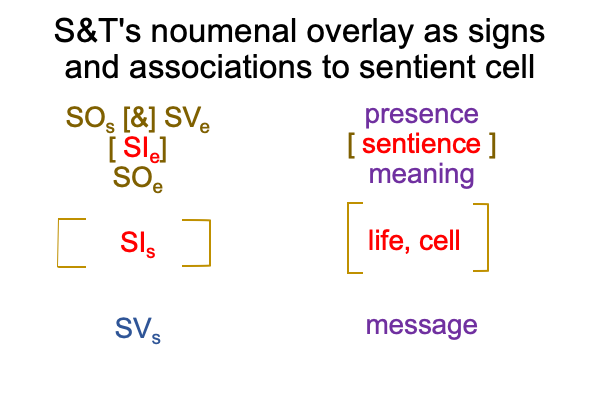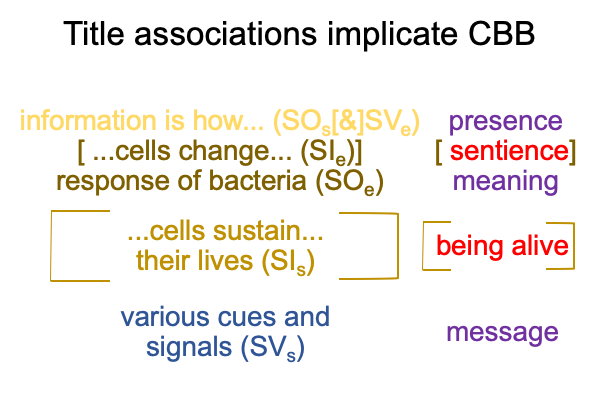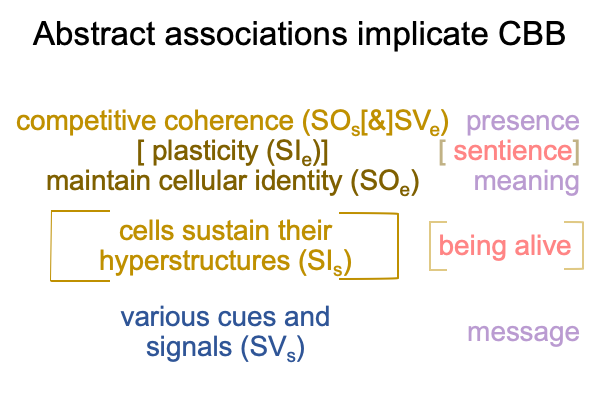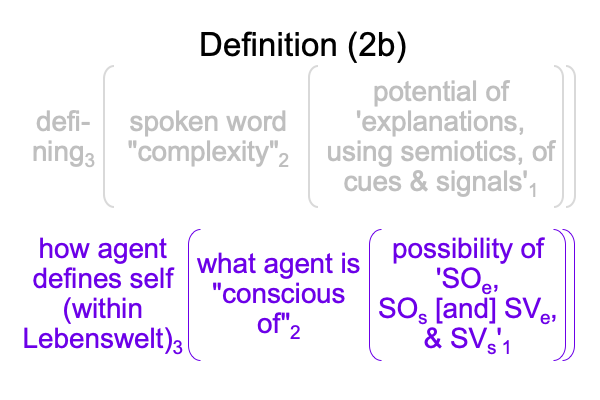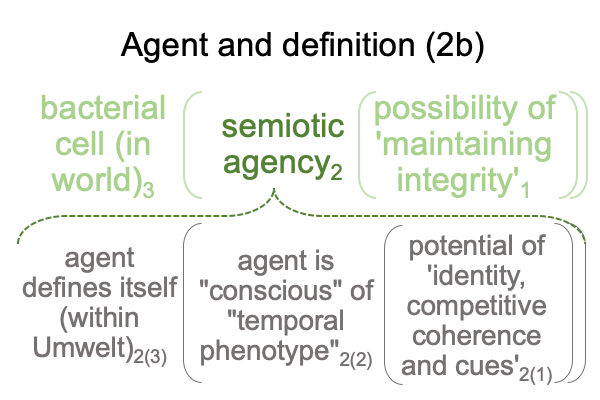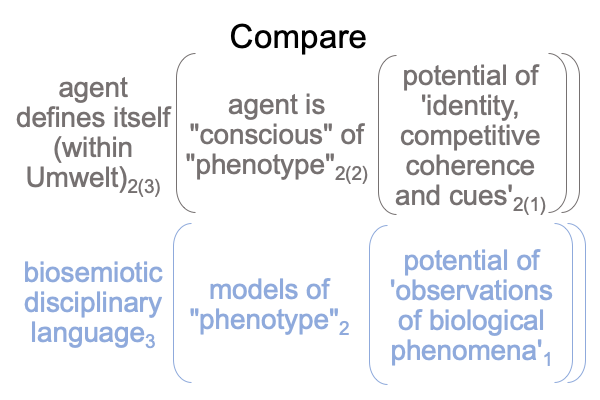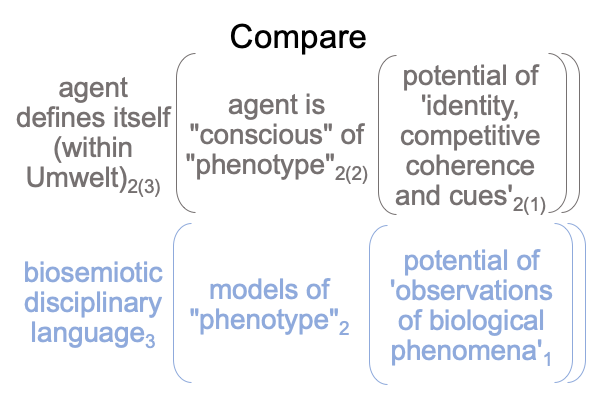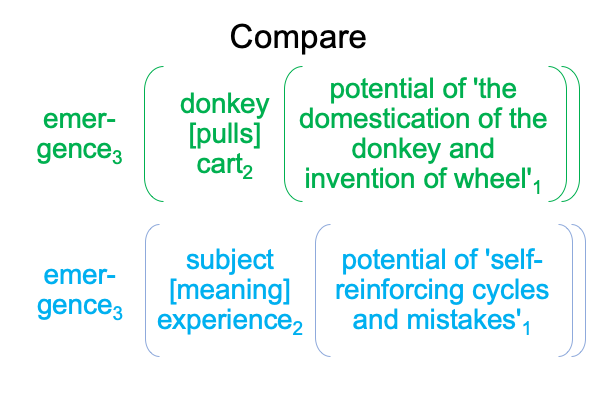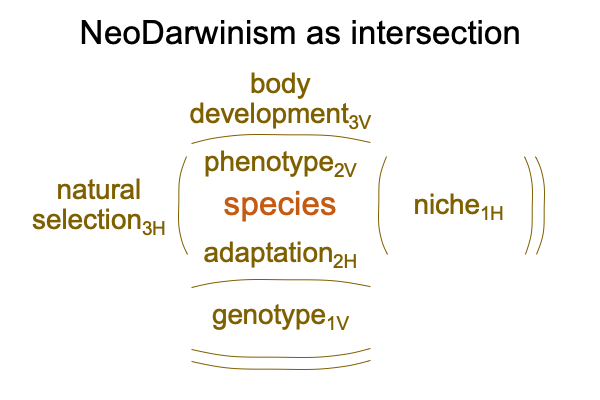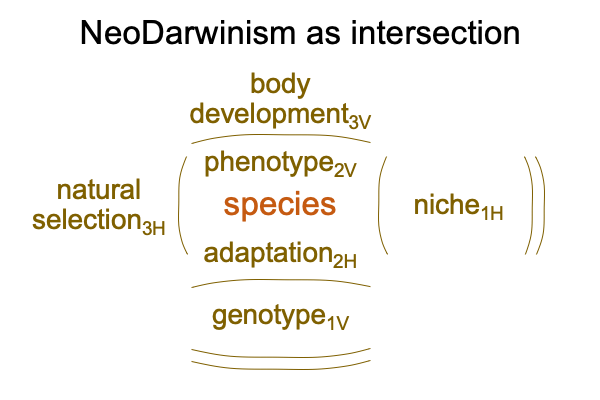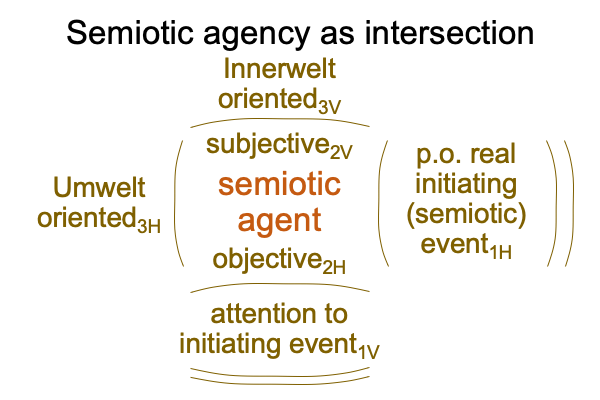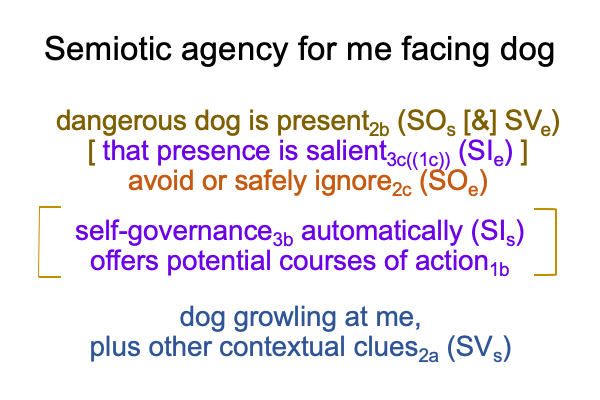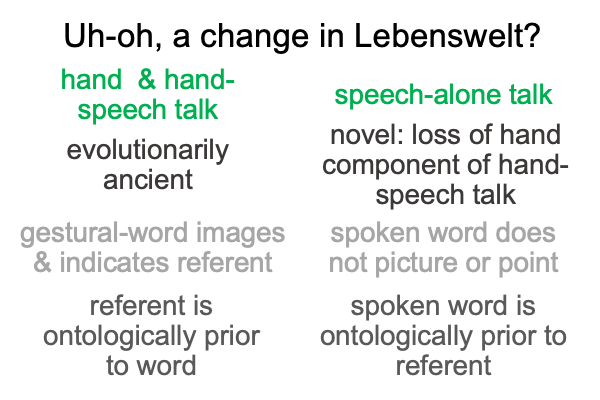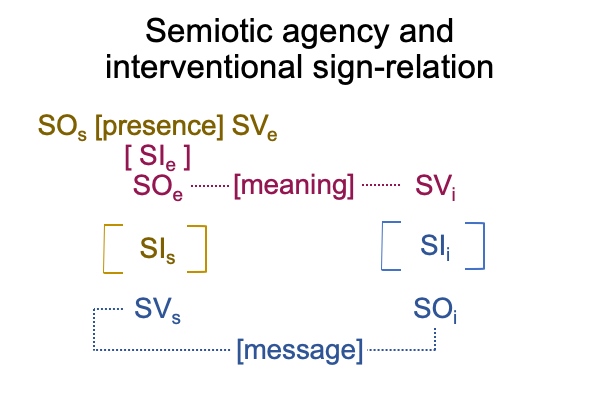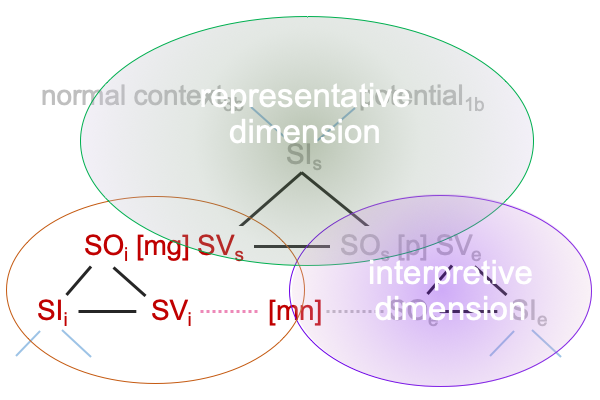Looking at Alexander Kravchenko’s chapter (2024) “A Constructivist Approach…” (Part 1 of 6)
0991 The text before me is chapter eight of Pathways (see point 0831 for book details, pages 167-185). The full title is “A Constructivist Approach to Meanings in the Universe”. The author is a linguist at Baikal University, Irkutsk, Russia.
0992 My examination, so far, identifies a biosemiotic noumenal overlay, composed of both semiotic agency (the Sharov and Tonnessen noumenal overlay) and the interventional sign relation. The diagram reifies three sign-relations: specifying, exemplar and interventional. The specifying and exemplar sign-relations belong to semiotic agency. The interventional sign relation stands outside of semiotic agency, but is integrated with semiotic agency by way of its participation in a three-level interscope. A three-level interscope contains all three sign-relations.
0993 The following figure of an interscope contains the three sign-elements (SV for sign-vehicle; SO for sign-object; SI for sign-interpretant) for each sign-relation (subscripts “s” for specifying; “e” for exemplar; “i” for interventional).
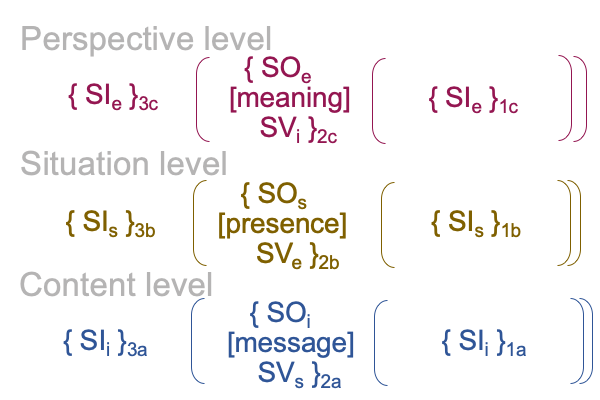
0994 An interscope is a category-based nested form composed of category-based nested forms.
For each level, a triadic normal context3 brings a dyadic actuality2 into relation with a monadic potential1.
The dyadic actuality2 fits Peirce’s formula for the category of secondness. Secondness consists of two contiguous real elements. For clear notation, the contiguity is placed in brackets.
0995 In the above figure, the real elements are sign-vehicles and sign-objects. The contiguity in each level carries the same label as one of the three potentials1 underlying any spoken term2 in the normal context of definition3.
Finally, among levels, perspectivec brings situationb into relation with the potential of contenta.
0996 Hmmm. I have an interruption.
Now, what was I saying?
Uh-oh, I better start over.
0997 My examination, so far, isolates a biosemiotic noumenal overlay, composed of both semiotic agency (the Sharov and Tonnessen noumenal overlay) and the interventional sign relation. The biosemiotic noumenal overlay reifies three sign-relations: specifying, exemplar and interventional. The specifying and exemplar sign-relations belong to semiotic agency. The interventional sign relation stands outside of semiotic agency, but is integrated with semiotic agency by way of two contiguities, [meaning] and [message].
0998 Here is a picture of the biosemiotic noumenal overlay.
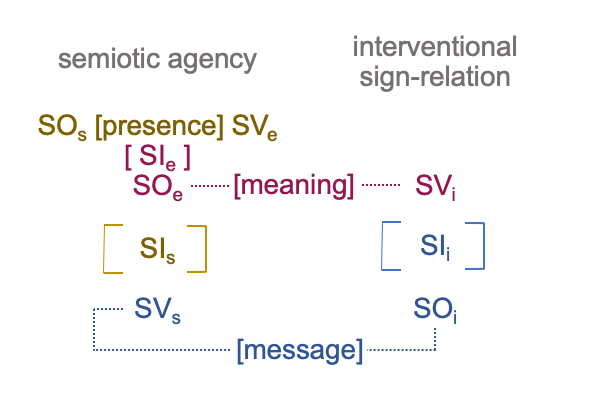
0999 So far, so good.
The author of this chapter addresses the existence of meaning in the universe from an epistemological perspective. “Episteme” derives from the Latin word for “knowledge”. “Logos” comes from the Greek word for “word”. Or maybe, “intrinsic nature of”? How about “study of”?
Looking at the above figure, I see a problem.
For this examination, [meaning] is the contiguity between the exemplar sign-object (SOe) and the interventional sign-vehicle (SVi).
Is that the same as “the meaning” that exists in the universe?
1000 It makes me wonder, “What is a contiguity?”
Here are some cases.
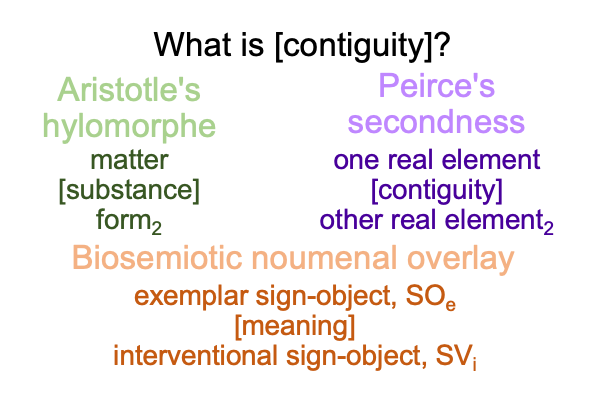
1001 Aristotle’s hylomorphe is exemplar. The much-abused word, “substance”, weirdly captures the way that matter “causes” form. The verb, “substantiates”, is just as effective. Can I justify the choice of the term, “substance”? Well, what is one more technical definition among the many dictionary definitions for the word, “substance”? Is that good enough?
One thing for sure, [substance] is not one of the real elements. [It] is neither matter nor form. [It] is the contiguity between them. So, what is [substance]?
1002 We (humans) know [substance] because we know [cause], [effect], [contact], [influence] and many more contiguities between real elements. This is precisely why contiguities cry out to be modeled. The real elements support phenomena. The contiguities cry out to be explained.
We (humans) also know actuality2. Semiotic agency begins with a real initiating (semiotic) event (SVs) (that is, an encounter). The first step in natural philosophy (for Aristotle’s tradition) is to regard a thing as matter [substance] form. See Comments on Jacques Maritain’s Book (1935) Natural Philosophy (by Razie Mah, available at smashwords and other e-book venues).
Actuality2 belongs to the Peirce’s category of secondness. Secondness consists of two contiguous real elements. Secondness is dyadic.
1003 With this said, I can see why there is a problem with [meaning]. [Meaning] is a contiguity between two real elements. One of those elements (SOe) belongs to semiotic agency. The other element (SVi) belongs to the interventional sign-relation.
1004 Earlier, in points 0887 through 0894, I portray [meaning] as the contiguity between the triadic structure of an actionable judgment (such as SOe) and the triadic structure of its category-based nested form (such as SVi).
In this case, another word for [meaning] is [unfolds].
An actionable judgment [unfolds into] a category-based nested form.
This very curious insight is not explored further in this examination.

